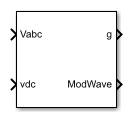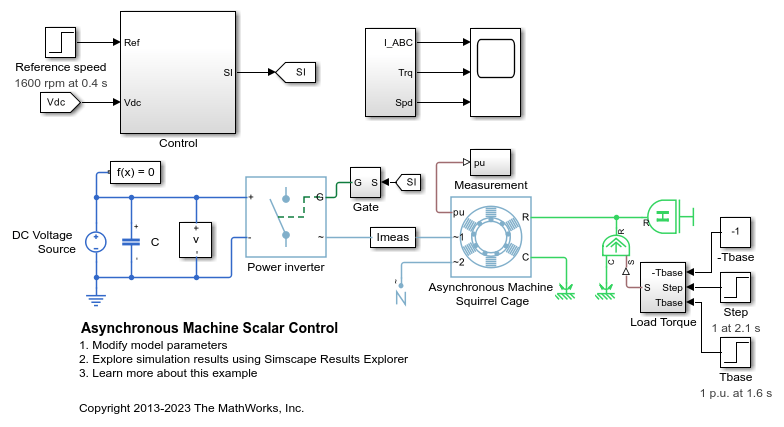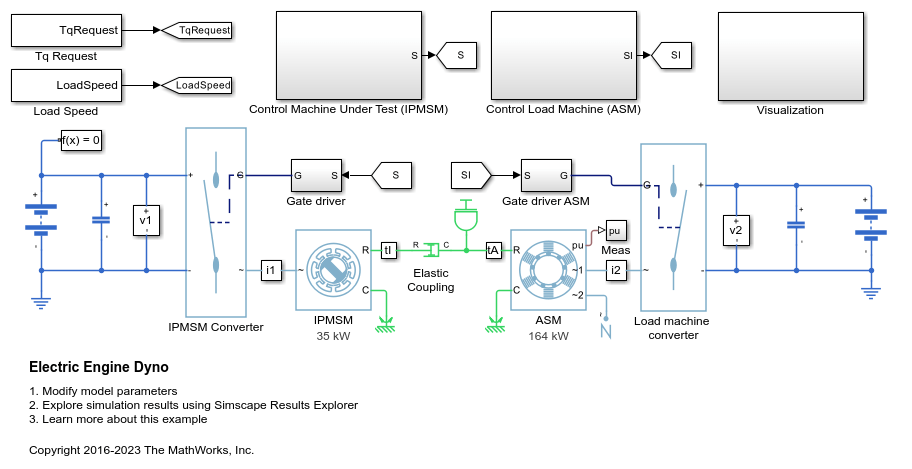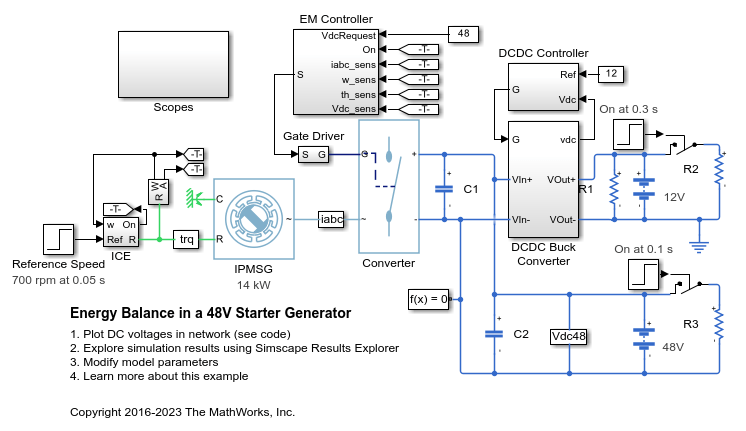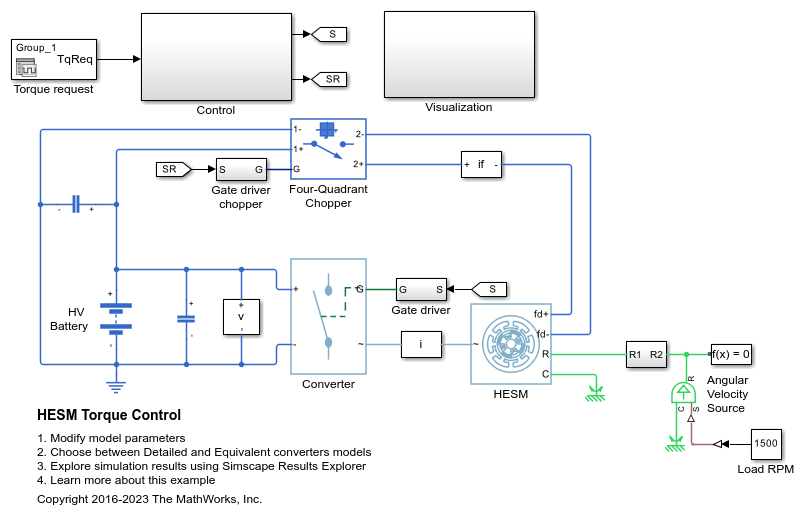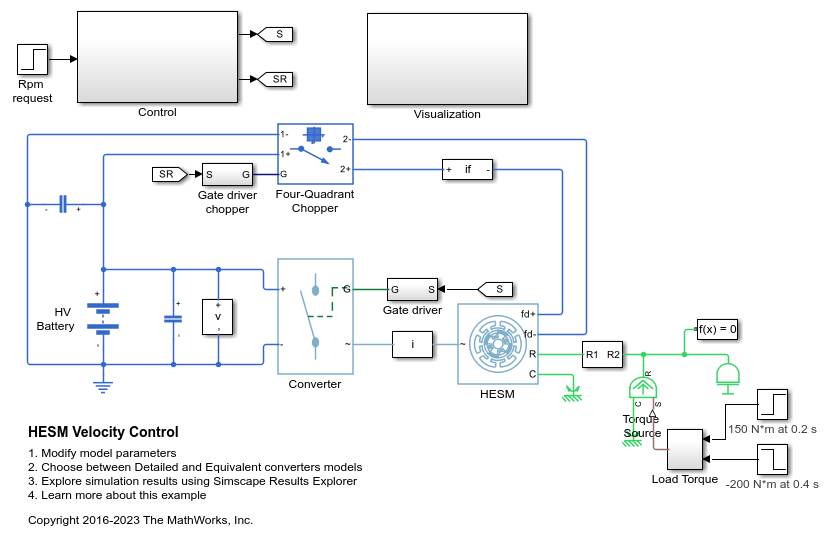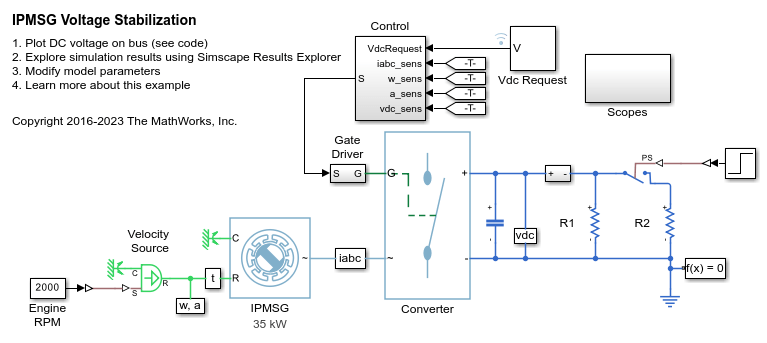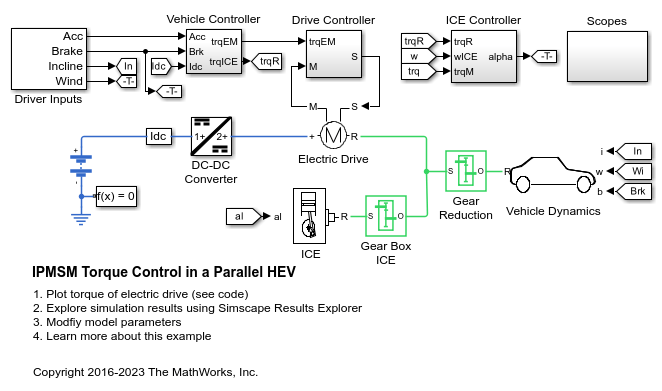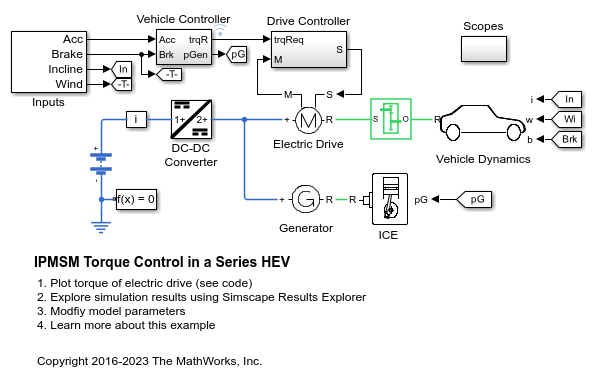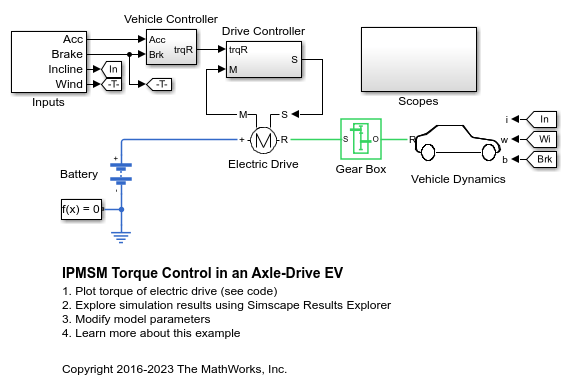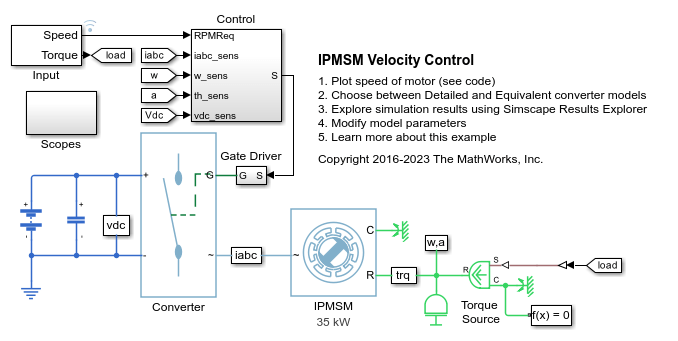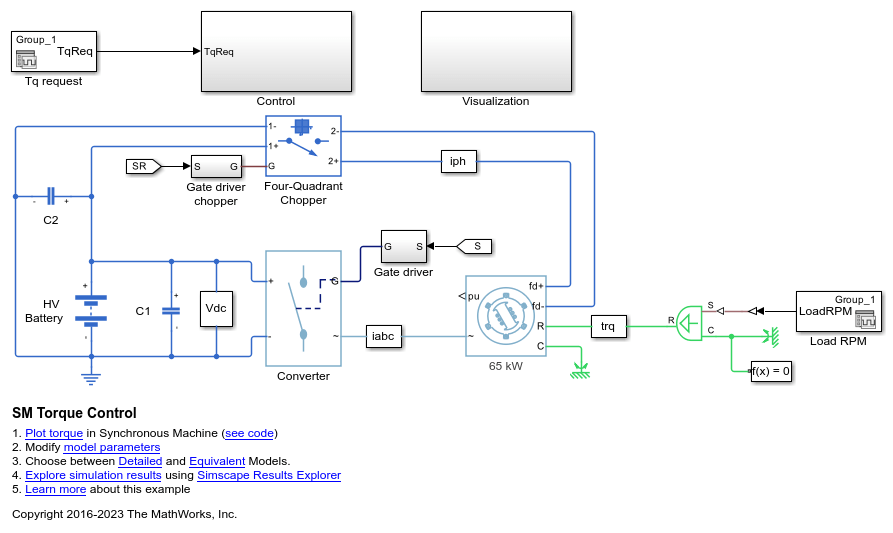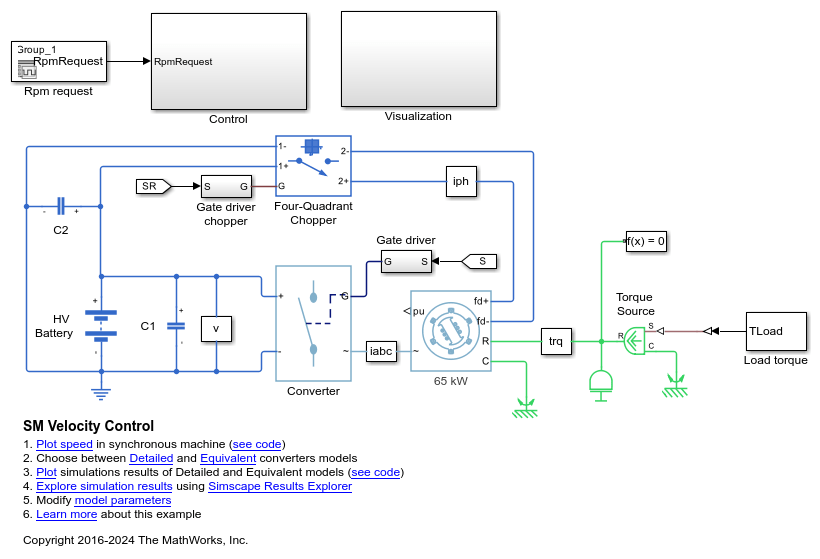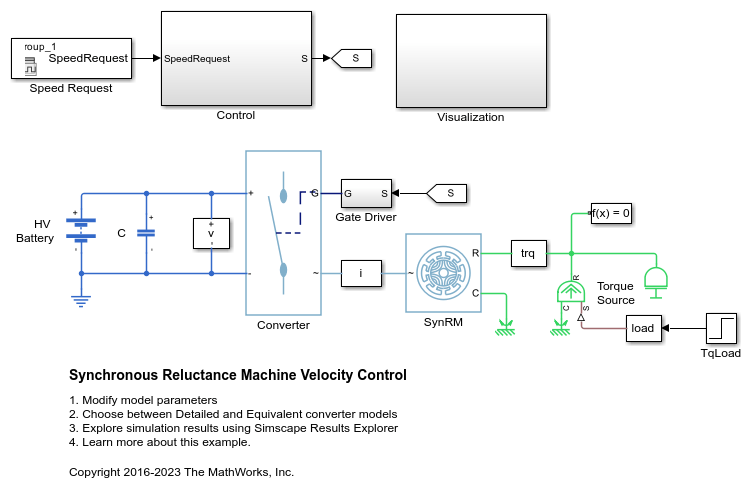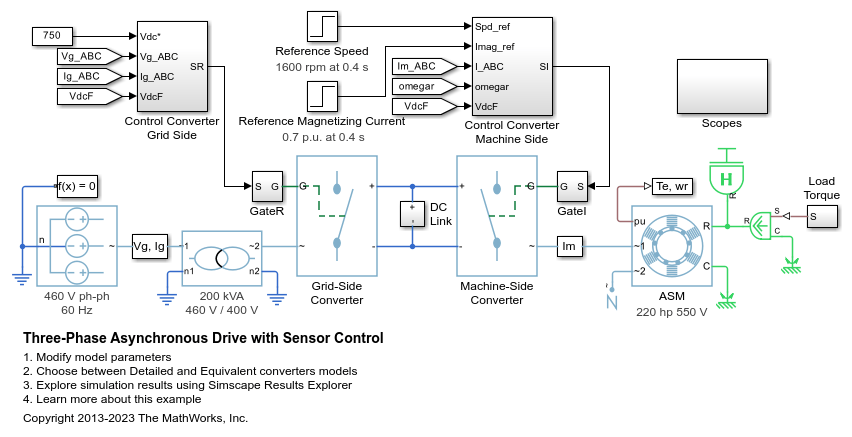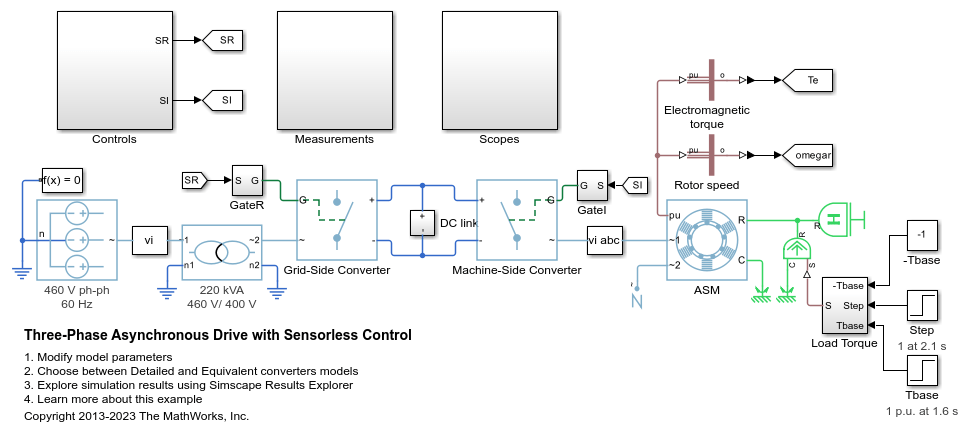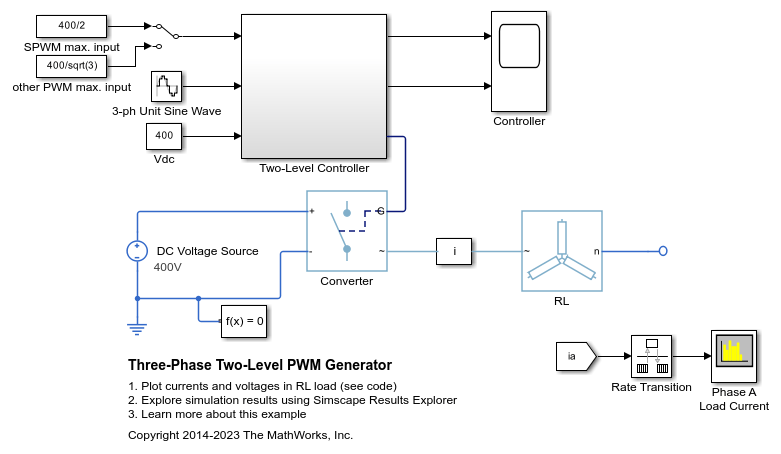PWM Generator (Three-phase, Two-level)
生成三相、两电平脉冲宽度调制波形
库:
Simscape /
Electrical /
Control /
Pulse Width Modulation
描述
PWM Generator (Three-phase, Two-level) 模块控制三相、两电平功率转换器的开关行为。该模块:
根据以下模块输入计算导通和关断门控时间:
三个正弦参考电压,每相一个
DC 链路电压
使用门控时间生成六个开关控制脉冲。
使用门控时间生成调制波形。
连续和不连续 PWM
该模块提供连续和不连续脉冲宽度调制 (PWM) 模式。下图显示了连续正弦 PWM (SPWM) 和连续空间矢量调制 (SVM) 波形之间的一般区别。

对于不连续 PWM (DPWM),该模块在每个基本周期内将调制波钳制到正 DC 轨或负 DC 轨上,总共 120 度。在钳位区间内,调制会中断。
一个具有 30 度 DPWM 的波形在每个基本周期有四个 30 度区间。
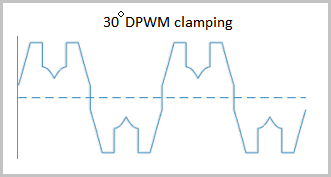
选择正向或负向 30 度相移会影响 60 度 DPWM 的钳位区间。
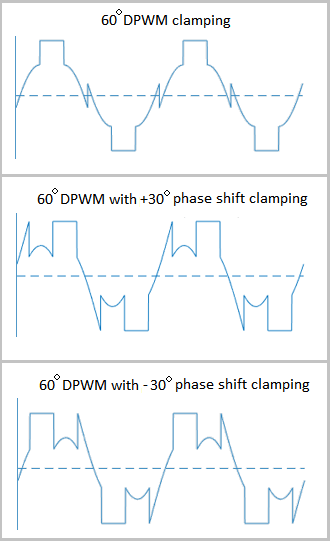
下图显示了 120 度 DPWM 的正 DC 钳位和负 DC 钳位波形。
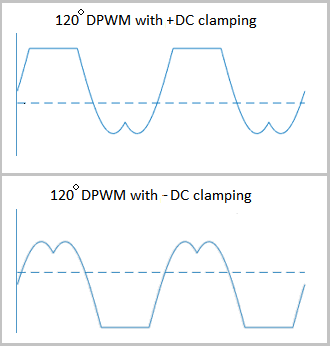
采样模式
使用此模块,您可以选择对调制波进行自然采样、对称采样或非对称采样。
PWM Generator (Three-phase, Two-level) 模块并不执行基于载波的 PWM。相反,该模块使用输入信号来计算门控时间,然后使用这些门控时间来生成要输出的开关控制脉冲和调制波形。
但是,基于载波的 PWM 有助于说明您选择的采样模式与模块生成的脉冲导通和关断行为之间的关系。基于载波的两电平 PWM 发生器可用于执行以下操作:
对参考波进行采样。
将样本与三角载波进行比较。
如果采样值高于载波信号,则生成导通脉冲;如果采样值低于载波波形,则生成关断脉冲。
为确定导通和关断脉冲行为,基于载波的两电平 PWM 发生器会使用以下方法对三角波进行采样:
自然采样 - 采样和比较发生在调制波和载波的交点处。
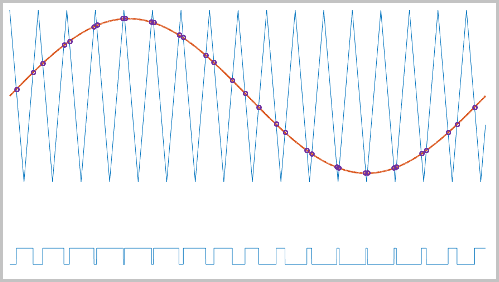
非对称采样 - 采样发生在载波的上边界和下边界。比较发生在采样后的交点处。
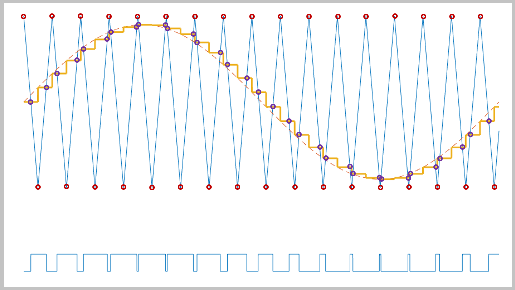
对称采样 - 采样仅发生在载波的上边界。比较发生在采样后的交点处。
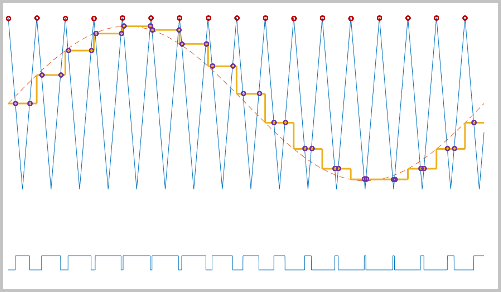
过调制
调制指数用于衡量功率转换器输出给定电压的能力,定义为:
其中
m 是调制指数。
Vm 是调制波的峰值。
Vc 是三角载波的峰值。
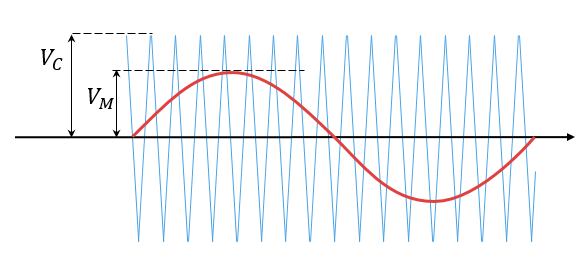
对于三相 SPWM:
其中
Vpeak 是相-中性电压基础分量的峰值。
vdc 是 DC 链路电压。
对于三相空间矢量 PWM (SVM) 和 DPWM:
在正常稳态运行下,0 <m ≤ 1。如果某个瞬变(例如负载增加)导致 Vm 的振幅超过 Vc 的振幅,则会发生过调制 (m > 1)。

如果发生过调制,功率转换器的输出电压会被钳制到正 DC 轨或负 DC 轨上。
在三相两电平 PWM 发生器示例中,Two-Level Controller 子系统包含一个 400 V 的 DC 链路输入,调制指数 m 为 0.8。对于 SPWM,最大输入电压为 400 V/2,即 200 V。为了演示过调制,在仿真开始时添加了一个瞬变。该瞬变迫使参考电压的振幅超过了 DC 链路电压的一半。为了突出显示过调制,示波器仅包含六个输出脉冲中一个脉冲的仿真结果,以及 a 相参考电压、调制波形和输出电压的仿真结果。

调制指数在 0.03 至 0.09 秒之间大于一。在过调制期间:
脉冲保持在导通或关断位置。
输出电压 Vao 被钳制到正 DC 轨或负 DC 轨上。
示例
端口
输入
输出
参数
参考
[1] Chung, D. W., J. S. Kim, and S. K. Sul. “Unified Voltage Modulation Technique for Real Time Three-Phase Power Conversion.” IEEE Transactions on Industry Applications, Vol. 34, No. 2, 1998, pp. 374–380.
[2] Hava, A. M., R. J. Kerkman, and T. A. Lipo. “Simple Analytical and Graphical Methods for Carrier-Based PWM-VSI Drives.” IEEE Transactions on Power Electronics, Vol. 14, No. 1, 1999, pp. 49–61.
扩展功能
版本历史记录
在 R2016b 中推出
